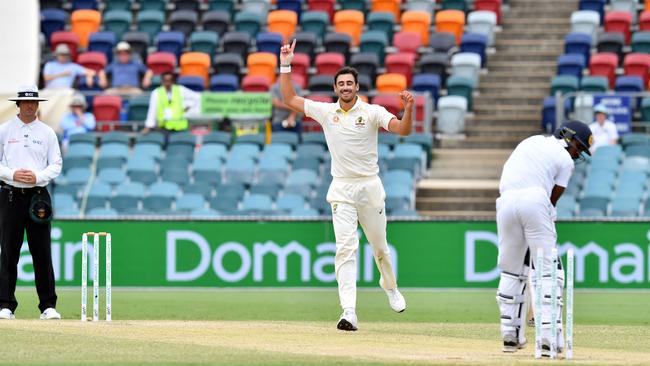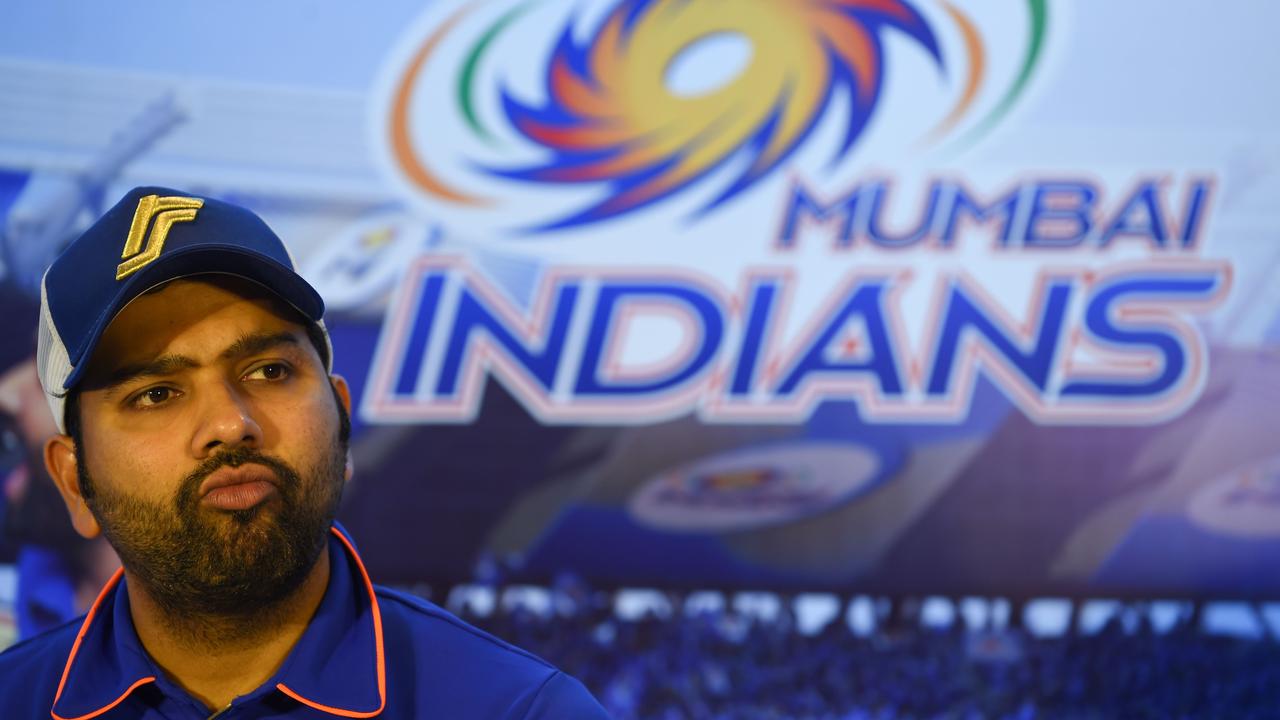Australia effective but we must reserve judgment until Ashes
So Australia win a series after 13 months, if you can call two Tests a series rather than a couplet or bracket.

So Australia win a series after 13 months, if you can call two Tests a series rather than a couplet or bracket, and it’s a case of two cheers at best.
As the clock neared 3pm at Manuka Oval yesterday, the digital screen served up the equation: “To win: Sri Lanka 368 runs, Australia one wicket.” Mitchell Starc soon broke the unbearable tension with something full and straight to collect his 10th wicket for a pleasingly symmetrical 100.
“Good hard Test cricket,” said a commentator, straining to accentuate the positive. In the same sense is smashing half-volleys on a bowling machine good hard practice, and six hours of Red Dead Redemption 2 good hard PlayStation. Under no pressure, everybody is a frontrunner.
To be sure, it is better than losing. But Sri Lanka have won seven away Tests in 43 in the last decade, four of them against Bangladesh and Zimbabwe. They arrive, promptly and correctly attired, because the Future Tours Programme obliges them to.
They are encouraged by the occasional individual feat, but their playing personnel is an inch deep, and in Canberra their best four pace bowlers and best batsman were scraped away.
They are beset, too, by opaque maladministration, so that their coach on this tour was suddenly and inexplicably relieved of selection responsibilities on the instruction of the Sri Lankan sports minister “in consideration of the need to form an effective and transparent selection mechanism”. Bureaucracy, eh? It’s a more universal lingo than Esperanto.
At home, where Sri Lanka can dictate conditions, it has historically been a different matter. When many of the same Australians visited Sri Lanka in 2016, Dinesh Chandimal, Kusal Mendis and Dhananjaya de Silva peeled off hundreds and Dilruwan Perera bagged 10 in a match. Here they have grossed 160 runs in 16 hits and two wickets in 80 overs.
In the corresponding 2016 series, Joe Burns and Usman Khawaja lost their Australian places. In Canberra they have each scored soothingly therapeutic hundreds. The tables have not been turned so much as two separate tables been used.
This made for a subdued conclusion to a Test summer that began with a clatter of Indian wickets on the first morning at Adelaide Oval two months ago — not the last false dawn.
Two thousand fans were in, even if the security jobsworths were still approaching their task as though guarding a nuclear reactor.
Sri Lanka’s “target” of 516, as with many fourth innings, was perfectly theoretical; the objective was more in the nature of “respectability”.
Such days have a distinctive dynamic. Some dig in, with the same good intentions as readers starting War and Peace, half-resigned to not reaching the end: thus Lahiru Thirimanne, who withstood 314 balls in the two Tests, and wasn’t disgraced.
Some embrace the relative freedom from expectation, the sense of conclusion forgone with only the margin of defeat being negotiated: thus Mendis, who played some classy shots then drove nonchalantly to cover to complete a disappointing series. The Australians pursued their ends with effective fixity of purpose, but little need to stretch.
There was much affirmative nodding about Mitchell Starc, who was deemed either back, or never away. Actually, both conclusions were reasonable.
Starc is regularly paralleled with Mitchell Johnson, swift, athletic, left-handed, hard-hitting. But Johnson’s best and worst were for much of his career not even in neighbouring postcodes. It was closing the gap between them, after a long physical and psychological rebuilding, that resulted in his late flowering.
The troughs that intersperse Starc’s peaks are more like valleys, when batsmen grow inured to his pace and predict his swing. He does not look bad so much as average. When a team is ripe for intimidation, however, Starc stands a foot taller.
Starc bowled superbly against Sri Lanka in 2016 — 24 wickets at 15 in a beaten team. The sight of them down the other end with 534 to bowl at was the perfect pick-me-up.
He probed for a hat-trick yesterday with four slips, a gully, a leg gully, a short leg and the whiff of the kill; it was only just averted.
The Australian top six that jerked in spasmodic unison when the Border-Gavaskar Trophy was at stake was during the Warne-Muralitharan Trophy rich in runs, to the degree that in horse racing a swab would be called for.
Good for Travis Head, who grew into his vice-captaincy with a counterpunching maiden hundred here. But when your five-year first-class average is 37, an average of 155 in two Tests has to be deemed an outlier. The important calls were arguably made ahead of this series. Had Shaun Marsh been chosen, there would probably be words now for his undoubted class and international quality; Aaron Finch might have hacked his way to a score or two as well. And they would have meant very little.
As far as takeaways for England are concerned, only a couple really emerged, Kurtis Patterson taking his opportunity, Will Pucovski not having his enlarged. The selectors have here probably pulled the right rein.
But given the quality of the opposition and the one-sidedness of the contest, it and many other things will remain unknown until Australia take the field against England six months hence.


